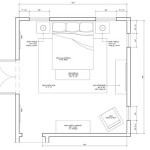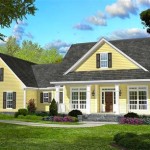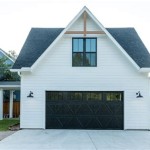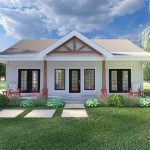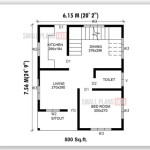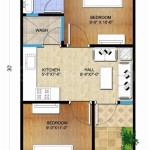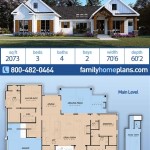Coastal One-Story House Plans: Design and Functionality
Coastal one-story house plans offer a compelling blend of relaxed living and practical design, ideally suited for waterfront or near-waterfront properties. These plans prioritize accessibility, emphasize indoor-outdoor connections, and often incorporate features specifically tailored to withstand coastal environments. The single-story design eliminates the need for stairs, making them attractive to those seeking aging-in-place options or simply preferring the ease of movement a single level provides. Beyond practical considerations, coastal one-story homes often embody a particular aesthetic, leaning towards light, airy, and unpretentious designs that harmonize with the natural beauty of the surroundings.
The appeal of coastal one-story house plans extends beyond retirees. Families with young children find the continuous living space safer and more convenient. Moreover, the integration of outdoor spaces, like porches, patios, and decks, allows for extended living areas and seamless transitions between the interior and exterior environments, a hallmark of coastal living. The architectural styles associated with coastal one-story designs can range from traditional Cape Cod and Craftsman to more contemporary and minimalist interpretations, allowing for a wide variety of aesthetic expressions while maintaining a connection to the surrounding landscape.
Key Considerations for Coastal One-Story Design
Designing a coastal one-story home requires careful consideration of several key factors, going beyond the standard elements of any house plan. These considerations aim to maximize the benefits of coastal living while mitigating the potential challenges presented by the environment.
Firstly,
site orientation
is paramount. The plan must consider the prevailing winds, sun angles, and potential flood risks. Orienting the house to maximize natural light and ventilation can significantly reduce energy consumption and improve the overall comfort of the living space. Careful placement of windows and doors, coupled with the use of overhangs and shading devices, can minimize heat gain during the summer months and maximize passive solar heating during the winter. Understanding the path of the sun is crucial for selecting window types and placement, optimizing energy efficiency and minimizing glare. Furthermore, understanding local building codes and regulations, particularly those relating to coastal construction and flood zones, is essential for ensuring a structurally sound and legally compliant design.Secondly,
material selection
plays a critical role in the durability and longevity of a coastal home. Materials must be able to withstand the corrosive effects of salt air, high humidity, and potential storm damage. Choices such as fiber cement siding, treated lumber, and impact-resistant windows are common for their resilience and low maintenance requirements. Metal roofing is often preferred for its wind resistance and longevity. Interior materials should also be chosen with moisture resistance in mind. Tile flooring, for example, is a practical and aesthetically pleasing option for high-traffic areas and bathrooms. The selection of appropriate materials directly impacts the long-term cost of ownership and the overall structural integrity of the building.Thirdly,
storm protection
is a non-negotiable aspect of coastal design. The house plan should incorporate features that protect against wind, rain, and potential flooding. Elevated foundations, reinforced framing, and hurricane-rated windows and doors are crucial elements. The roof structure should be designed to withstand high winds, with proper anchoring and bracing. In flood-prone areas, breakaway walls can be incorporated into the design to allow floodwaters to pass through without compromising the structural integrity of the main building. Landscape design should also consider storm protection, with the use of native plants that are wind-resistant and can help to stabilize the soil.Maximizing Space and Functionality in a One-Story Coastal Home
While the single-story design offers accessibility and convenience, it also presents unique challenges in terms of space utilization. Careful planning is essential to maximize functionality and create a comfortable and livable environment.
Open floor plans are a common feature in coastal one-story designs. Combining the living room, dining area, and kitchen into a single open space creates a sense of spaciousness and allows for better flow of light and air. This design approach also facilitates social interaction and makes it easier to entertain guests. However, it is important to define distinct zones within the open space to maintain a sense of order and functionality. The strategic placement of furniture, area rugs, and architectural elements can help to create visual separation and define different areas within the open plan.
Ample storage is crucial in any home, but it is especially important in a one-story design where vertical space is limited. Built-in storage solutions, such as bookshelves, cabinets, and window seats with storage compartments, can maximize space utilization and minimize clutter. Utilizing vertical space effectively, by installing shelving up to the ceiling, can also significantly increase storage capacity. Walk-in closets and pantries provide dedicated storage space for clothing, linens, and food items. External storage options, such as sheds or garages, can be used to store outdoor equipment and tools.
The integration of indoor and outdoor spaces is a defining characteristic of coastal living. Large windows, sliding glass doors, and French doors connect the interior living spaces to the exterior, creating a seamless transition between the two. Porches, patios, and decks extend the living area outdoors, providing space for relaxation, dining, and entertaining. Outdoor kitchens and fireplaces can further enhance the outdoor living experience. Careful consideration should be given to the placement of outdoor living spaces to maximize privacy and take advantage of views. Landscaping can be used to create a buffer between the house and the surrounding environment, providing shade, privacy, and visual appeal.
Architectural Styles and Design Elements
Coastal one-story house plans encompass a wide range of architectural styles, each with its own unique characteristics and design elements. The selection of an architectural style should consider the surrounding landscape, the homeowner's personal preferences, and the overall aesthetic of the coastal community.
Cape Cod style homes are characterized by their simple, symmetrical design, steep roof pitches, and dormer windows. These homes are typically clad in wood shingles or clapboard siding and feature a central chimney. The Cape Cod style is well-suited for coastal environments due to its ability to withstand harsh weather conditions. The steep roof pitch allows for efficient drainage of rain and snow, while the wood siding provides natural insulation. The simple design and durable materials make Cape Cod homes relatively low-maintenance.
Craftsman style homes are known for their handcrafted details, low-pitched roofs, wide eaves, and exposed rafter tails. These homes often feature a large front porch with prominent columns and decorative woodwork. The Craftsman style emphasizes natural materials and a connection to the surrounding landscape. Stone or brick accents are commonly used to enhance the architectural details. The spacious front porch provides a welcoming entrance and a comfortable outdoor living space. The low-pitched roof and wide eaves provide protection from the elements.
Contemporary coastal homes often feature clean lines, minimalist design, and large windows that maximize views of the surrounding landscape. These homes may incorporate a variety of materials, such as glass, steel, and concrete, to create a modern and sophisticated aesthetic. Open floor plans and flexible living spaces are common features. Contemporary coastal homes often prioritize energy efficiency and sustainability, incorporating features such as solar panels, rainwater harvesting systems, and green roofs. The use of large windows allows for natural light to flood the interior spaces, creating a bright and airy atmosphere.
Regardless of the architectural style chosen, specific design elements can enhance the coastal aesthetic. Light and airy color palettes, inspired by the colors of the sea and sky, create a sense of tranquility and relaxation. Natural materials, such as wood, stone, and seagrass, add texture and warmth to the interior spaces. Nautical-themed décor, such as seashells, anchors, and rope accents, can further enhance the coastal ambiance. The use of large windows and doors allows for unobstructed views of the surrounding landscape, bringing the beauty of the outdoors inside. By carefully selecting architectural styles and design elements, homeowners can create a coastal one-story home that reflects their personal style and embodies the relaxed and carefree spirit of coastal living.

1 Story House Plans One Modern Luxury Home Floor

By The Sea Coastal House Plans From Home

Coastal Plan 3 134 Square Feet 4 Bedrooms 5 Bathrooms 207 00110

Coastal House Beach Floor Plans

Beach House Plan Caribbean Florida Style Coastal Home Floor

Coastal Plan 1018 00272

One Level Coastal House Plan With Split Garage Layout 66390jmd Architectural Designs Plans

Beach Style House Plan 3 Beds 5 Baths 3527 Sq Ft 27 492 Houseplans Com

Coastal House Plan 1018 00272

One Level Coastal House Plan With Split Garage Layout 66390jmd Architectural Designs Plans

